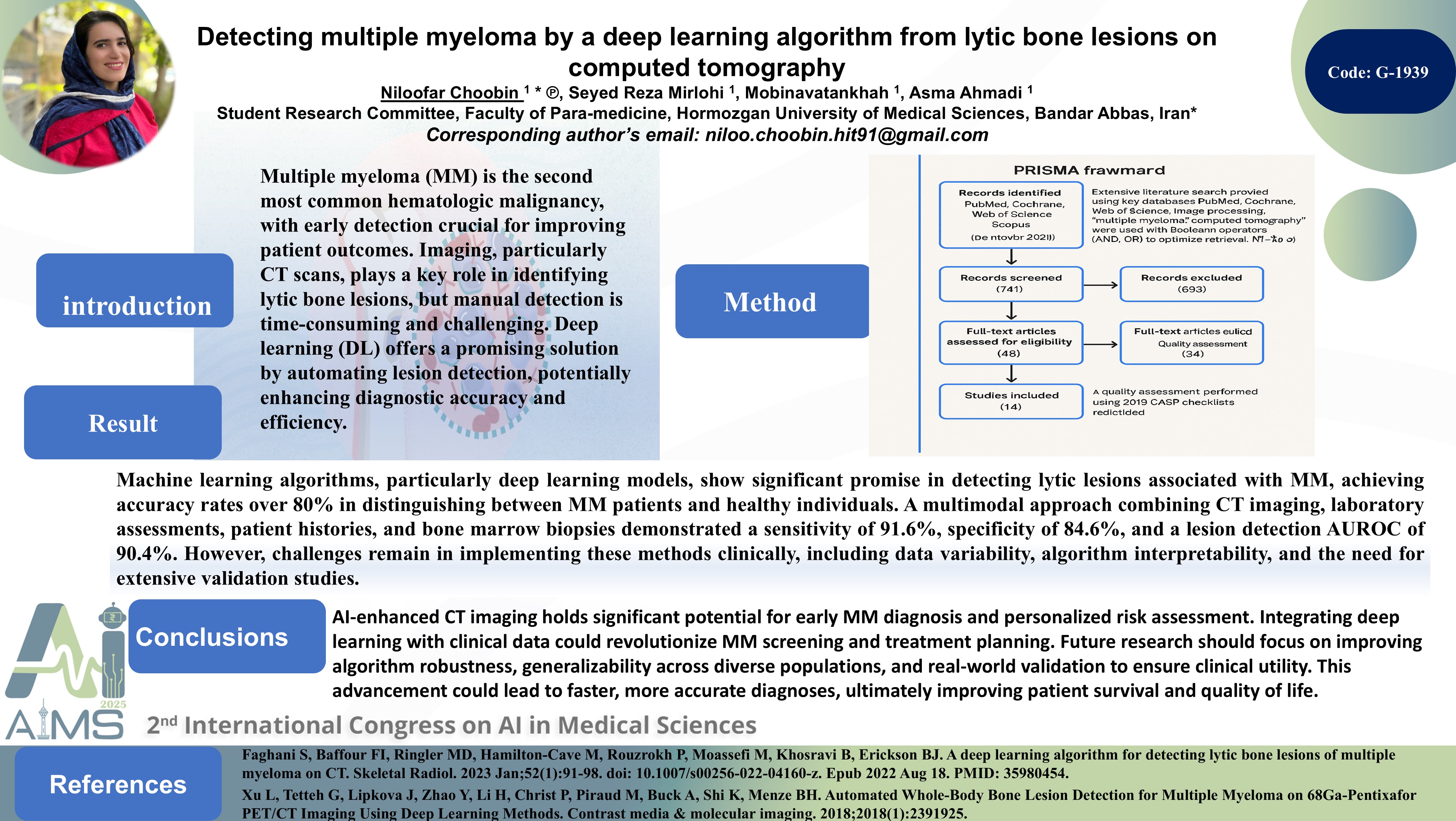Detecting multiple myeloma by a deep learning algorithm from lytic bone lesions on computed tomography
Code: G-1939
Authors: Niloofar Choobin * ℗, Seyed Reza Mirlohi, Mobina Vatankhah, Asma Ahmadi, Abolfazl Zanghaei
Schedule: Not Scheduled!
Tag: Biomedical Signal Processing
Download: Download Poster
Abstract:
Abstract
Introduction: Multiple myeloma (MM) is the second most common hematologic malignancy, with early detection crucial for improving patient outcomes. Imaging, particularly CT scans, plays a key role in identifying lytic bone lesions, but manual detection is time-consuming and challenging. Deep learning (DL) offers a promising solution by automating lesion detection, potentially enhancing diagnostic accuracy and efficiency. Method: To maintain a rigorous and systematic methodology, we followed the PRISMA framework during our review. An extensive literature search was performed using prominent databases such as PubMed, Cochrane, Web of Science, and Scopus. Key search terms included "artificial intelligence", "deep learning", "image processing", "multiple myeloma", and "computed tomography" combined with Boolean operators (AND, OR) to optimize retrieval. The search was restricted to studies published from December 2018 to November 2024, yielding an initial set of 741 articles. Following a quality assessment using the 2018 CASP checklists, we finalized our review with 14 selected studies. Result: Machine learning algorithms, particularly deep learning models, show significant promise in detecting lytic lesions associated with MM, achieving accuracy rates over 80% in distinguishing between MM patients and healthy individuals. A multimodal approach combining CT imaging, laboratory assessments, patient histories, and bone marrow biopsies demonstrated a sensitivity of 91.6%, specificity of 84.6%, and a lesion detection AUROC of 90.4%. However, challenges remain in implementing these methods clinically, including data variability, algorithm interpretability, and the need for extensive validation studies. Conclusion: AI-enhanced CT imaging holds significant potential for early MM diagnosis and personalized risk assessment. Integrating deep learning with clinical data could revolutionize MM screening and treatment planning. Future research should focus on improving algorithm robustness, generalizability across diverse populations, and real-world validation to ensure clinical utility. This advancement could lead to faster, more accurate diagnoses, ultimately improving patient survival and quality of life.
Keywords
Multiple Myeloma, Deep Learning, Computed Tomography
